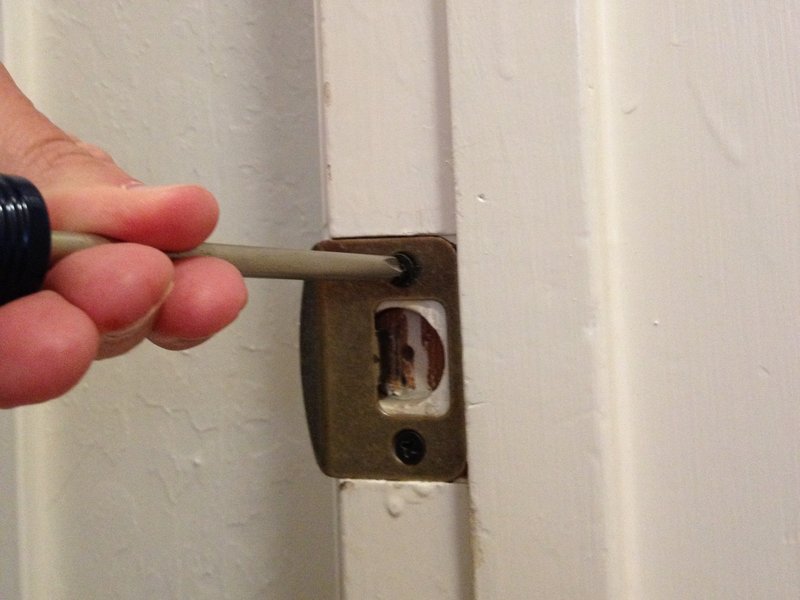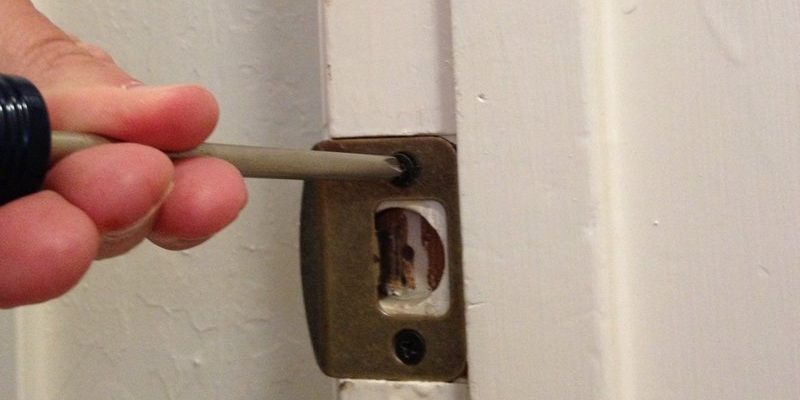
Here’s the thing: doors are supposed to keep the elements (and the noise) out, not invite them in for a party. But a rattling door doesn’t mean you need a full replacement. Usually, it just means something’s a bit out of sync—maybe a loose strike plate, worn weatherstripping, or a warped frame. Brands like Andersen, Therma-Tru, and Pella design their doors to last, but no door is immune to strong winds and the little issues they cause over time.
Why Do Exterior Doors Rattle in the Wind?
You might be wondering why your front door sounds haunted on a windy night, while your neighbor’s stays silent. The main reason? A rattling exterior door happens when there’s just enough extra space for the wind to move parts of the door or its frame. Even a tiny gap can let the wind push and pull, making the door shake, the latch bounce, or the whole thing vibrate like a cheap speaker.
A snug door blocks drafts, but the smallest misalignment can turn your doorway into a wind instrument.
Here’s what’s actually happening: most modern exterior doors are held closed with a latch that fits into a metal strike plate on the frame. Over time, the wood can dry out, or the frame might settle a bit, making the latch fit looser. Add in some high winds, and the door starts to rattle as the latch moves in its slot. Even strong, brand-name doors like those from Therma-Tru or Pella can develop this problem after a few years.
If you have weatherstripping that’s worn or missing, your door won’t just rattle—it might even let in drafts or water. So if you hear rattling, don’t ignore it. It’s usually a sign that your door needs a little tuning.
Checking for the Source of the Rattle
Before you can fix anything, you need to figure out exactly where the noise is coming from. It might seem obvious that it’s the door, but sometimes it’s actually the frame, the lockset, or even the glass panel in the door.
Start with this simple process:
- Close your door and lock it. Try pushing and pulling gently to see if it moves or rattles in its frame.
- If it does, unlock the door and check the hinges—do they feel loose or wobbly?
- Next, look at the strike plate (the metal piece where the latch sits). If the latch wiggles or doesn’t sit snugly, you’ve probably found your problem.
- Check any glass inserts—sometimes the rattle comes from loose glass or trim, especially on older doors.
Listen carefully as you try each area. Sometimes, you’ll hear a tinny sound from metal hardware, or you might feel the whole door vibrate. That detail matters because a rattle from a loose hinge is solved differently than a rattle from a loose latch.
Common Causes of Rattling Exterior Doors
Let me explain the most frequent reasons your door won’t sit quietly through a storm. Some are quick fixes, while others might take a little more troubleshooting.
- Loose Strike Plate or Latch: If the latch doesn’t sit firmly in the strike plate, wind can bounce it around. Over time, screws can loosen or the plate can shift.
- Worn or Missing Weatherstripping: Weatherstripping acts like a cushion between the door and the frame. When it flattens or falls off, the door loses its snug fit.
- Loose Hinges: Hinges that aren’t tightly screwed in let the door move back and forth, even if it’s locked.
- Warped Door or Frame: Wood swells and shrinks with moisture and temperature. A door or frame that’s warped leaves big gaps for wind to get in and vibrate the door.
- Poorly Fitted or Damaged Hardware: Sometimes, the door lock or handle can rattle if they’re loose or not installed quite right.
You might notice one or more of these issues at the same time—especially if your door is a few years old or has seen some rough weather.
How to Tighten a Rattling Exterior Door
Once you know what’s causing the rattle, it’s time for some hands-on troubleshooting. Even if you’ve never fixed a door before, these steps are pretty friendly for beginners.
- Tighten All Hardware: Use a screwdriver to check the hinges and the strike plate. If the screws turn easily, tighten them until snug. Don’t overtighten—just make sure nothing’s wobbly.
- Adjust the Strike Plate: If the latch is loose in the plate, try moving it closer to the door or bending the metal lip inward a bit. Some plates have adjustable slots for this exact reason.
- Replace or Add Weatherstripping: Pick up some adhesive-backed foam or rubber weatherstripping (available at any hardware store). Clean the door frame and apply the strip where the door meets the frame, pressing it down firmly.
- Use a Door Sweep: If there’s a gap at the bottom, a door sweep can add weight and help keep the door stable. It also blocks drafts and helps with soundproofing.
It can feel a bit like trial-and-error, but most rattling doors will quiet down just from tightening and adjusting. If nothing helps, you might have a warped door—more on that soon.
Fixing Warped Doors and Frames
If you’ve tried tightening everything and you’re still hearing a rattle, the next thing to check is whether the door or the frame is warped. This happens a lot with wood doors, especially in humid or rainy climates. You might even spot sunlight peeking through the edge of the door—never a good sign.
A warped door loses the tight seal that keeps out wind and noise, and no amount of adjusting hardware will really fix it.
Here’s what you can do:
- Look closely at the gaps around the door. Are they wider at the top, bottom, or on one side?
- If the door itself is bowed or twisted, sometimes you can sand down the high spots and repaint or reseal it. That might buy you another season or two of quiet.
- For bigger warps, replacement is usually the only long-term fix. If your door is covered by a warranty (brands like Andersen or Pella usually offer several years), check before doing any heavy repairs yourself.
- A temporary fix: You can add extra-thick weatherstripping or a compression seal to the problem area, which may reduce the rattle and block drafts.
Keep in mind—warping is a bigger job, and if you’re not comfortable with tools, it might be worth calling a pro.
Dealing with Glass Rattles in Front Doors
Many exterior doors have glass panels or decorative inserts. These can become a source of rattling all on their own, especially if the panel’s gasket dries out or the trim comes loose. On older doors, you might notice the glass clinking or vibrating even when the wind isn’t too strong.
Here’s how to quiet a glass rattle:
- Check for loose trim or strips holding the glass in place. Gently press around the edge—if you feel any movement, you’ve found the trouble spot.
- If the glass itself is moving, you can carefully pry off the trim, add a thin bead of clear silicone caulk or new glazing putty, and press the trim back on. This will seal the glass and stop the rattle.
- For factory-sealed glass (like on a Pella or Therma-Tru door), check the warranty. Sometimes, the seal breaking is covered, and they’ll repair or replace the glass panel for you.
- If you’re not comfortable working with glass, call a pro. It’s not worth slicing a finger to save a little time.
Glass rattles might seem minor at first, but they can get worse over time, especially in high winds.
When to Call in a Pro
Let’s be real—some fixes are a breeze, but others can chew up your whole weekend and leave you frustrated. Here’s when it makes sense to call a handyman or a door specialist instead of powering through yourself:
- The door is badly warped, cracked, or rotted. In these cases, it might be time for a replacement, not just a repair.
- The lock or handle is broken or won’t sync up with the frame. If you can’t reset the hardware so the door closes securely, a pro has the tools and the know-how to get it lined up.
- You see water damage, mold, or signs of serious leaks. Especially with wood doors, this is a sign of a bigger problem—don’t wait to get help.
- You’ve tried troubleshooting everything and nothing helps. Sometimes, the frame itself has shifted and needs professional adjustment or shimming.
If you call a pro, write down what you’ve already tried—that helps them zero in on the issue fast.
Preventing Rattling Doors in the Future
After you’ve quieted your door, it’s smart to think about keeping it that way, no matter how wild the weather gets. Regular maintenance is the name of the game.
- Check and tighten hardware every season. Screws tend to loosen over time, especially in homes that shift with temperature and humidity changes.
- Inspect and replace weatherstripping as needed. If it’s flattened, cracked, or peeling away, swap it for a fresh strip. It’s cheap insurance against rattles and drafts.
- Paint or seal wood doors every couple years. Keeping moisture out helps prevent warping and swelling.
- Watch for little problems before they get big. A tiny rattle now can turn into a major project later if ignored. Stay proactive.
Honestly, a quiet, solid-feeling door makes your whole home feel more comfortable and secure.
Wrapping It Up: Enjoy a Quieter, Cozier Home
A rattling exterior door is annoying, but it’s not a death sentence for your entryway. Most of the time, it just takes a little troubleshooting—tightening some screws, adjusting the latch, or freshening up your weatherstripping. Even if you’ve never handled a screwdriver, taking the time to figure out the root cause pays off. And if you run into bigger issues, like warping or water damage, there’s no shame in calling a professional.
The good news? Once you fix that rattle, you’ll notice your home feels quieter, warmer, and even a little more secure. Next time the wind howls, you’ll know your door is built to stand firm—and with a bit of regular upkeep, it’ll stay that way for years.
